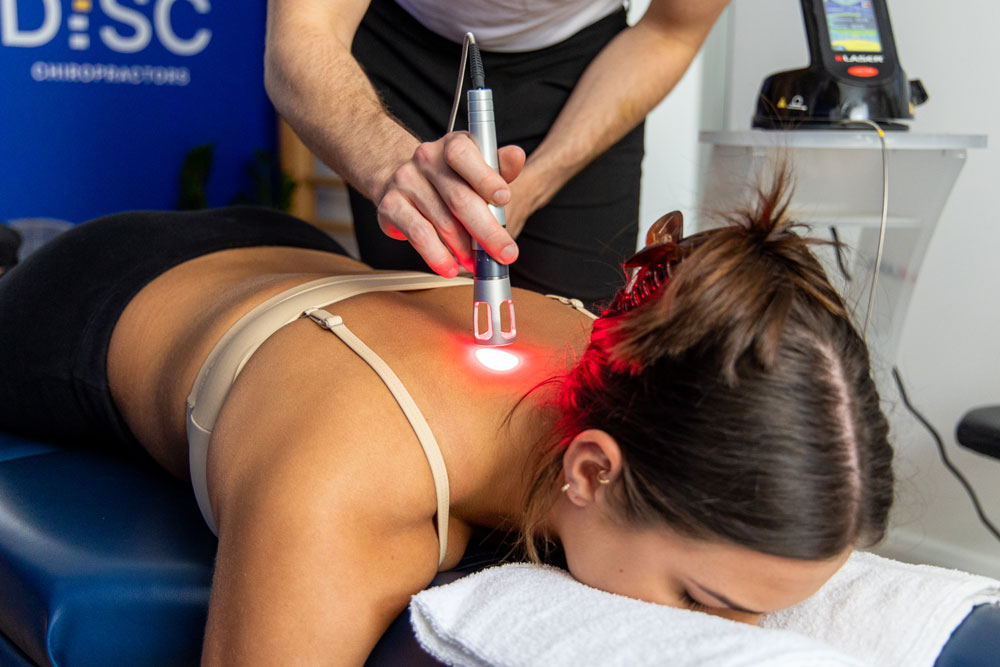Knee Pain
Book Now
The knee is a joint that bears the impact of your bodyweight throughout the day, so it’s unsurprising that knee injuries are extremely common. However, you are statistically more likely to suffer acute knee injuries if you play sports that involve sudden turns, like football, tennis or running.
Chronic Knee Pain can also be caused by improper loading from everyday activities; crucial to this is the theory that if used properly the knee joint has no reason to wear out. However, if the body has other structural issues like tight hips or ankle issues then the hinge mechanism that the knee is known for will have shear forces placed upon it causing it to fail.
Prolonged imbalance is likely to result in arthritic change due to the constant use of the lower limbs during day to day activities.
Categories of knee pain issues

Alignment
Pain, symptoms or wear & tear on one side.

Stability
Popping / cracking, joint swelling after activity, joint pain after activity.

Joint Articulation
Constant joint swelling and pain.

Neuromuscular
Numbness, tingling, burning, chronic muscle tightness, pain that radiates

Nerve Root
Sharp stabbing pain at the centre of the knee
Conditions that cause Knee Pain
Trapped Nerve Root
Due to the nature of nerves, damage and irritation in the lower back can actually be felt at their far end, in this case sharp stabbing or burning pain can be felt in the centre of the knee joint capsules, and in fact is a form of Sciatica.
Local Nerve Irritation
The knee contains a number of nerves, including the tibial nerve, the common peroneal nerve, and the saphenous nerve. These nerves are responsible for providing sensory and motor function in the lower leg and foot. The large sciatic nerve splits just above the knee to form the tibial and common peroneal nerves. The tibial nerve travels down in the posterior region, while the common peroneal nerve runs around the lateral side of the knee and then down the front of the leg to the foot.
Injuries to the knee can affect any of these nerves, but the infrapatellar branch of the saphenous nerve (IPBSN) and the common peroneal nerve (CPN) are typically the most vulnerable to injury. Damage to these nerves can lead to a number of issues, including numbness, pain, difficulty walking, and an increased risk of falling.
Ligament Damage
Most often caused by trauma from a sudden change of direction. The knee has four main ligament groups at the front, back and on both sides. If damaged, the ligament will be swollen, cause pain on movement, and you may be unable to put weight on the knee. Additionally, there are two fundamental stabilising ligaments in the centre of the knee known as the cruciate ligaments which when ruptured create large amounts of instability and pain.
Meniscus Tear
A meniscus is a piece of cartilage located between the femur and the tibia which absorbs shock in the knee, it can be impacted and damaged when the knee is suddenly twisted and is therefore a common injury among athletes. This condition causes pain, swelling and sometimes a crunching sound can be heard when moving the knee. A subcategory of this can be seen when the meniscus becomes damaged and loose fragments break off, historically these were called ‘joint mice’ and can cause the knee to lock.
Knee Bursitis
A bursa is a small sac of fluid which protects the knee joint, so that the tendons and ligaments can move easily. If this is damaged, the knee can become swollen.
Tendinitis
Patellofemoral (puh-tel-o-FEM-uh-rul) Pain Syndrome (or ‘Runner’s Knee’)
Osteoarthritis
Baker’s Cyst
Fracture
A knee fracture can be caused by a sudden trauma to the area. This is likely to mean severe pain when touching the area or when moving.
DISC TREATMENT PROTOCOL
The first step in treating knee pain is to find the underlying cause, often the pain experienced by a patient is the last “domino” to fall in a cascade of reactions. A thorough examination at our DISC Clinic in Surbiton will help not only identify exactly what is generating the pain but aim to understand its root cause.
Once a diagnosis is determined, treatment options to address the issue can be explored. Pain relief, corrective measures, and preventative strategies can be implemented to ensure the problem does not return in the future.



Spinal Decompression Therapy is one of the powerhouse treatments available at The DISC Chiropractors, its traction technology provides a unique ability to heal disc injuries and to un-trap the nerves that are often at fault for issues further down the chain for example in the arms and legs.
When conditions struggle to heal, Laser Therapy is an extremely safe and effective method of advancing rates of recovery. Its warm photon light energy stimulates mitochondrial activity to enhance recovery in each and every cell of the body. Laser therapy is especially useful in cases of inflammation, such as arthritic and repetitive strain conditions.
A major part of how our treatment protocols work is to ensure whilst the pain is coming under control, we are filling the patient with the knowledge of how to keep and maintain their results using corrective measures and rehabilitation tools to enhance their outcomes.
Contact Us
If you would like to find out what we could do to help your Knee Pain, please click the icon below to book a thorough consultation to evaluate your case.
